After our quick tour around Canterbury (and a coffee) we were again on the bus for a twenty-minute trip down to Dover. Canterbury was really busy that day with a food fair, and it seemed no-one else but Steve and I were journeying down to Dover by bus that day – we had it to ourselves. The driver, a Dovorian, was very friendly and when he learned we were only to visit Dover for a few hours took us on an un-scheduled detour past the Castle through the tiny streets in his big bus just so we could see it close up!

Again we were met in Dover by a friendly local Denise, one of the Dover Greeters. This is a free service and well worth it if, like us, you have limited time and want to cover as many bases as possible. We were expecting that Denise would just give us access to the cemetery, but she took us by car and walking all around the places we wanted to see and a few more besides.
Check out the map Dover Map 2 from To live a long and Prosperous Life to see some of the places I mention in this post.
First stop was the old Hebrew cemetery, Charlton Road, on Copt Hill. While none of the Nathan family are buried here as the cemetery was not opened until the family had moved away (although Solomon Lyon Nathan’s mother in law Catherine Isaacs was the first person to be interred), the walls incorporate plaques removed from the Synagogue after it was demolished as a result of bomb damage from WWII. (see p124 To live a Long and Prosperous Life)
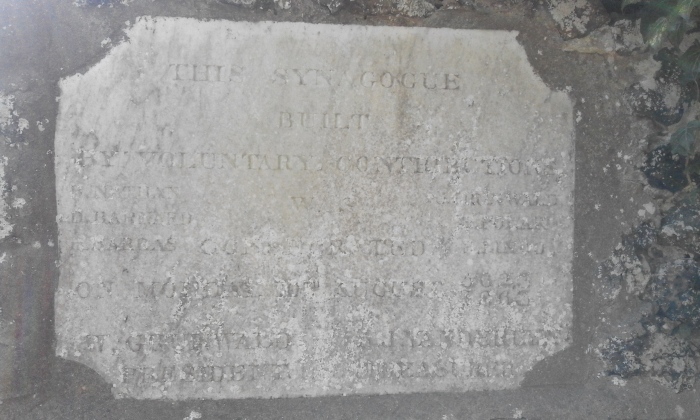
The plaque laid by Barnett Nathan in the new Dover Synagogue in 1865.
THIS SYNAGOGUE
BUILT BY VOLUNTARY CONTRIBUTIONS:
B. NATHAN J.GRUNWALD, D.BARNARD, H.POLACK, H.BARRAS, B.LINDON WAS CONSECRATED ON MONDAY 10th AUGUST 5625 – 1865
W. GRUNWALD A.J.VANDERLYN PRESIDENT TREASURER
( D. Barnard and AJ Vanderlyn were Barnett Nathan’s sons-in-law)
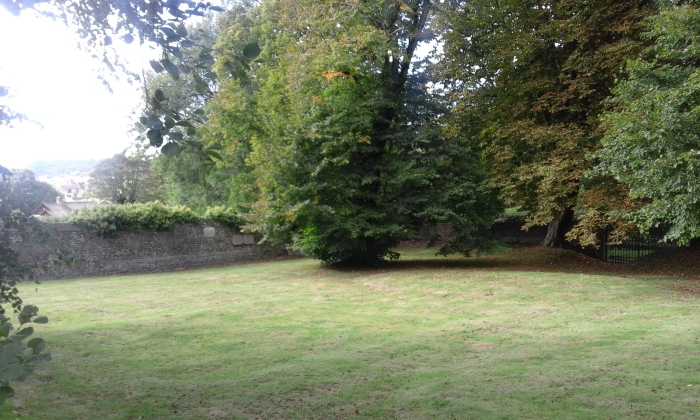
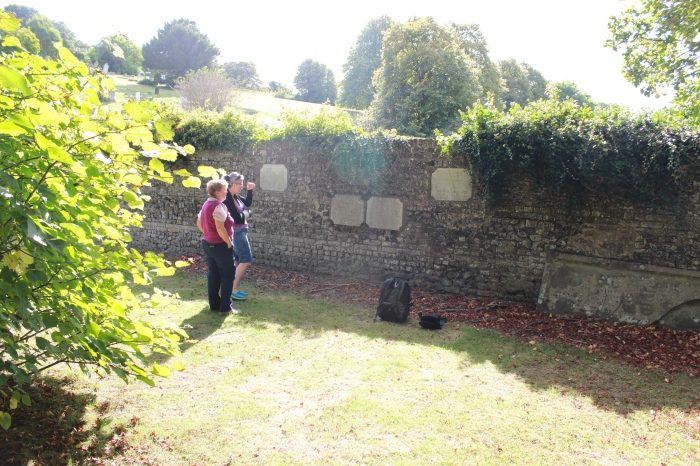
The small cemetery is sandwiched between two other cemeteries and like the Canterbury Hebrew burial ground it is also locked. The lower part seen here is treed and is quite pleasant, however the graves are all perched higher up on the rise. There was little grass there (probably sprayed) with many graves eroding and some with rabbit holes which was sad to see. Over the wall was St James cemetery, where Dinah’s cousin Rebecca Mallett, nee Abrahams is buried (see ‘An intriguing affair’ p87 TLL&P). However as I have yet to find a plot reference or if there is a headstone for Rebecca Mallett we did not have the time to search for her.
We then went up to Western Heights where we could look down onto Snargate Street, and across the channel to France. The view is now vastly different from when Dinah was a little girl, or even the first few decades of the 20th century:
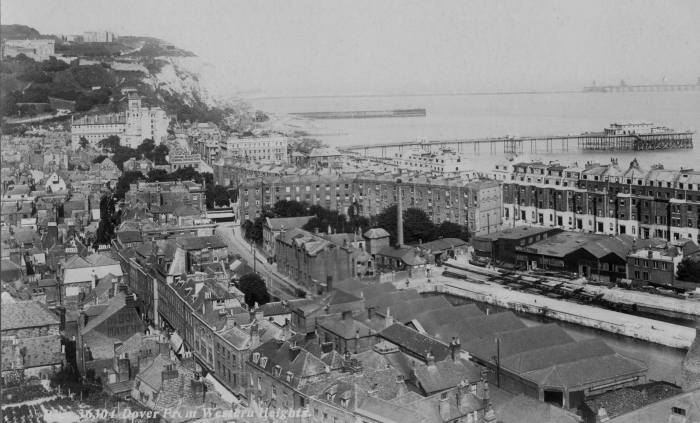
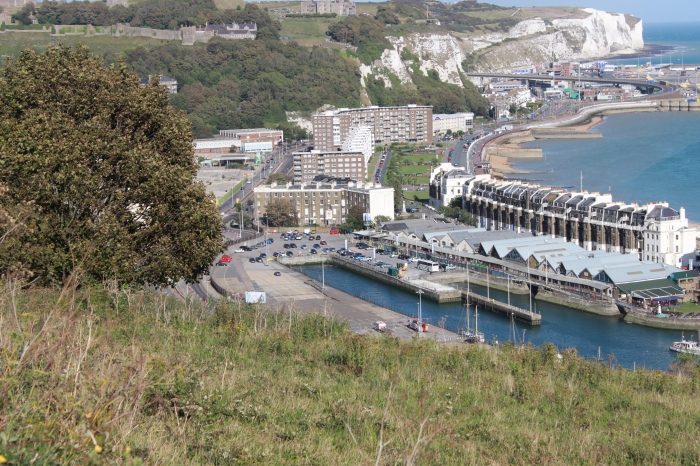
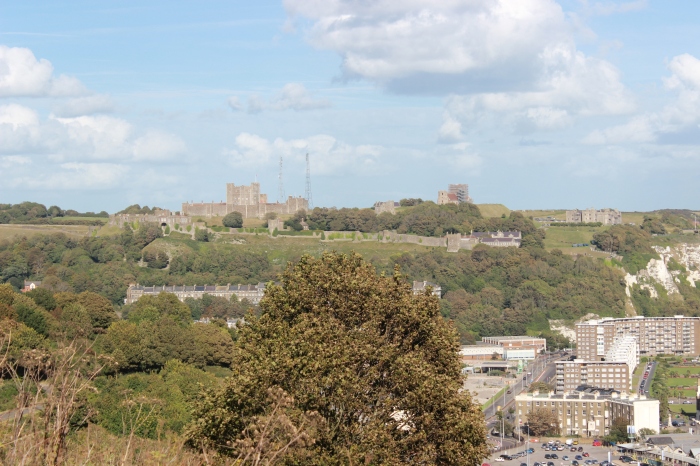
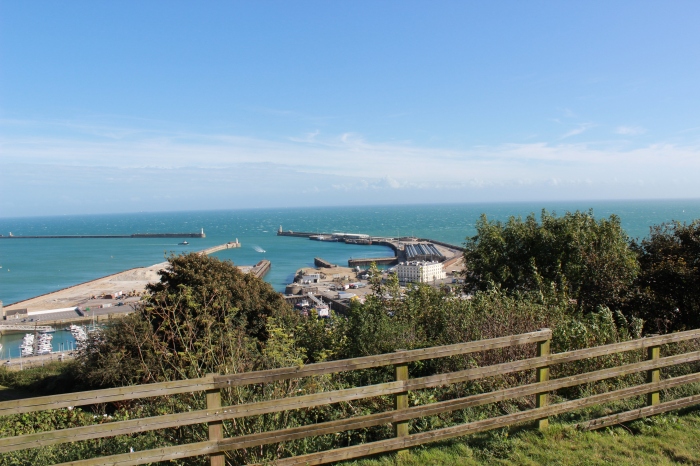
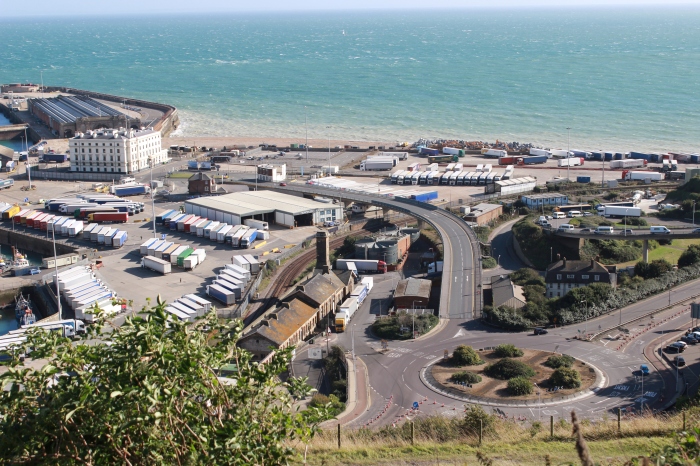
On the way back down we stopped at the oldest burial ground in Dover; Cowgate Cemetery. Somewhere in here is the grave of Nathaniel Nathan’s son Nathaniel Sheppard who died as an infant. The graveyard has been allowed to revert to a wilderness and is a nature reserve. With mown pathways it is a pleasant sheltered place to wander in.
Continuing on our family history trail we drove down Castle Street, and stopped to find the retirement home of Barnett and Julia Nathan, at number 26. They lived here for a few years, long enough to appear on the 1861 census where Barnett is recorded as ‘gentleman’ and Julia ‘lady’.
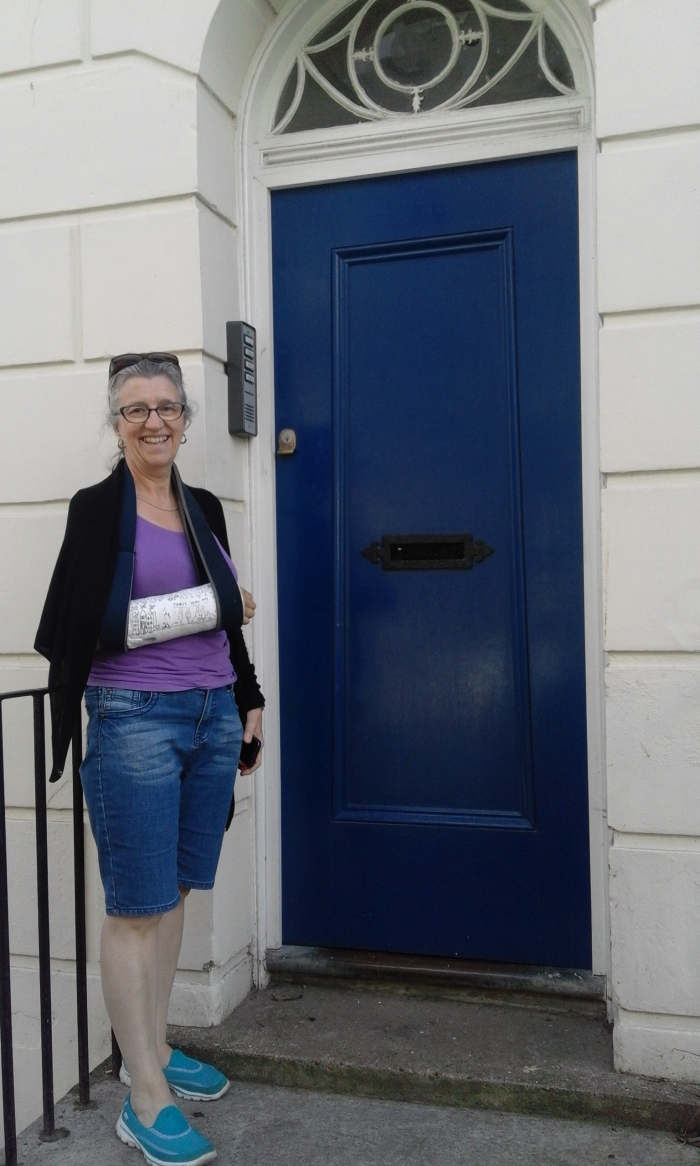
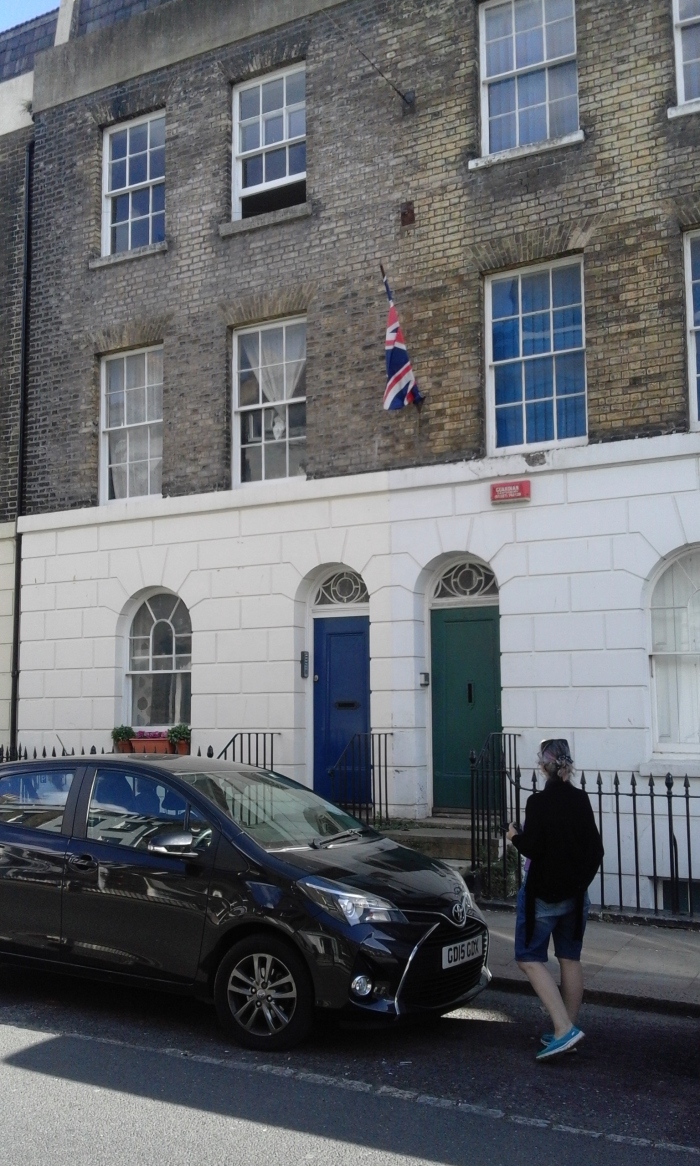
We then had a chance to get a feel of the Dover foreshore, walking along the waterfront and around the new harbour developments. Of course I couldn’t resist and I slipped down onto the beach and pocketed a small golden sandstone pebble and a piece of water-worn chalk. Next time I visit Greymouth I will leave this on Dinah’s grave – full circle again.

Then it was just a short stroll along Snargate Street. A handful of buildings remain, many vacant, on what was once the thriving business and shopping centre.
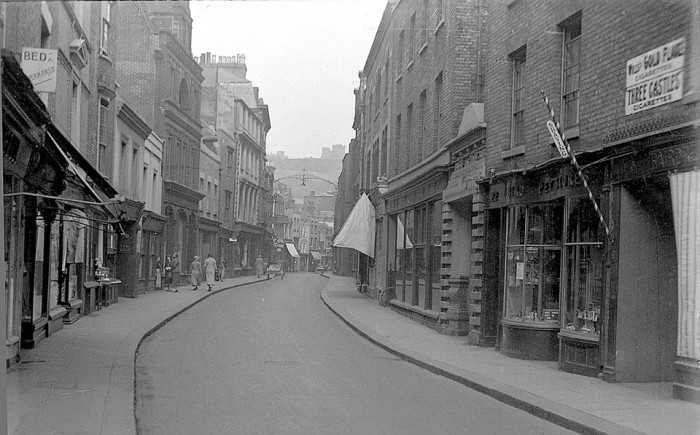
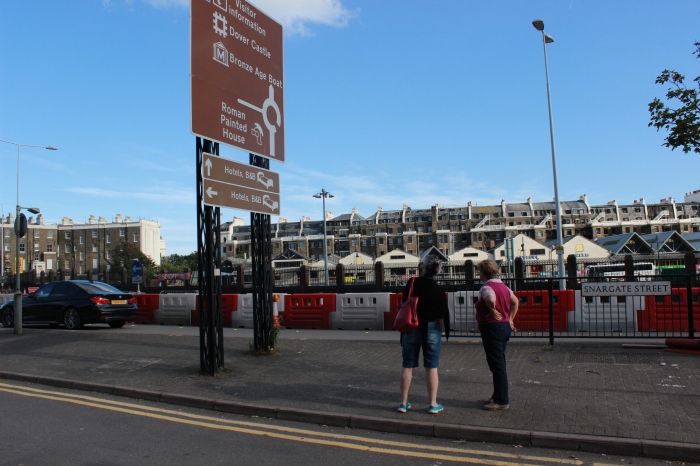
One building of note that remains is the Dover Masonic lodge, which Barnett Nathan was an esteemed member, it is masonic records which give us the earliest record of Barnett in Dover. This is reputed to be one of the oldest continuously used lodge buildings.

While standing on Snargate Street I was quite relieved to hear seagulls , as I had written about Dinah hearing the gulls cry when she was a little girl. She would scarely recognise the place now. Gone are the many shops, bustling crowds and red-coats; Dover seems to be a shadow of its former self. No longer a destination, it is a barely a stopping place for the traffic heading to the continent. The A20 runs alongside Snargate street, and there were an inordinate amount of traffic barriers as road works were underway to remove traffic roundabouts, no doubt so people can travel theough dover even more faster.

Waiting for the bus by the little park, Pencester Gardens, I did notice lots of families enjoying the sunday afternoon sunshine, with the castle on the sky-line. At the edge of the green area I discovered I could look down onto gently flowing water occuied by a couple of ducks. I had found the Dour (sometimes Dovr), the little river that over thousands of years cut down through the cliffs and created the valley in which Dover, the town of its name, sits. Now its path to the sea is culverted over and it exits somewhere into the former Pent which lay on the seaward side of Snargate Street. Snargate Street probably got its name from the barrier used on the Dour for preventing debris from washing into and fouling the harbour and anchorage area.
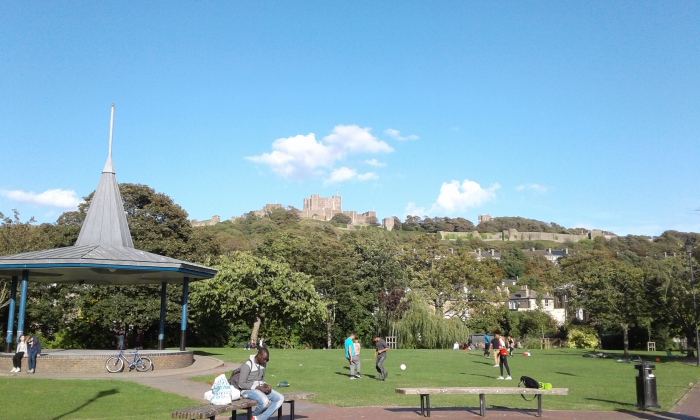
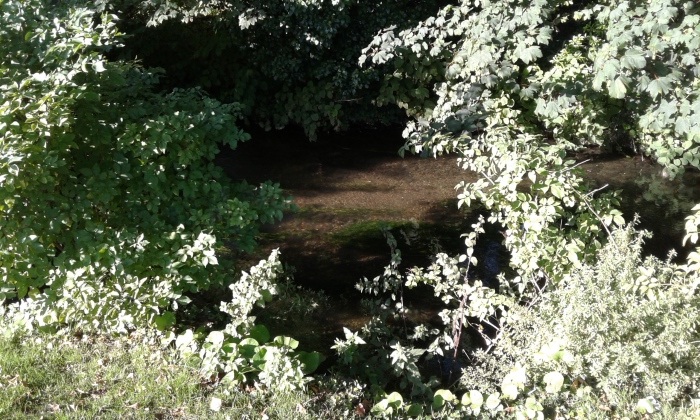
Our all too brief visit of Dover had come to an end. We boarded the bus and headed back to London, the lowering sun giving us a final glimpse of the white cliffs as we climbed up the valley and back to the motorway. We hadn’t seen the castle, or climbed the Grand Shaft, but we did achieve what some had said was impossible – a day trip to Canterbury and Dover. I was tired but so glad that I had the opportunity to see for myself the places that figured so largely in the Nathan family.




